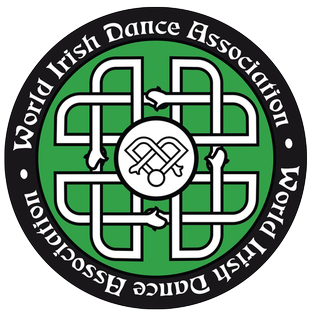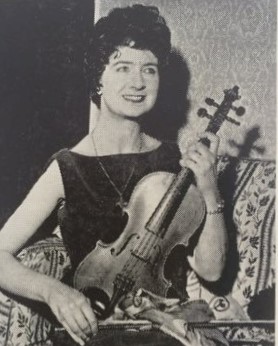Related Research Articles

Irish dance refers to a group of traditional dance forms that originate in Ireland, encompassing dancing both solo and in groups, and dancing for social, competitive, and performance purposes. Irish dance in its current form developed from various influences such as earlier native Irish dance, English country dancing and later possibly French quadrilles, as it became popular in Britain and Ireland during the 19th century. Dance was taught by "travelling dance masters" across Ireland in the 17th and 18th centuries, and separate dance forms developed according to regional practice and differing purposes. Irish dance became a significant part of Irish culture, particularly for Irish nationalist movements. From the early 20th century, a number of organisations promoted and codified the various forms of dance, creating competitive structures and standardised styles. Irish dancers who compete for competitive reasons dance in a dance style that is more modern than traditional Irish dance. It is mainly done solo, but there is some team dancing in groups of 2, 3, 4, 6, 8, 10, 16 and even numbers onwards.
Conradh na Gaeilge is a social and cultural organisation which promotes the Irish language in Ireland and worldwide. The organisation was founded in 1893 with Douglas Hyde as its first president, when it emerged as the successor of several 19th century groups such as the Gaelic Union. The organisation was a spearhead of the Gaelic revival and of Gaeilgeoir activism.

A cèilidh or céilí is a traditional Scottish and Irish social gathering. In its most basic form, it simply means a social visit. In contemporary usage, it usually involves dancing and playing Gaelic folk music, either at a home or a larger concert at a social hall or other community gathering place.

The Royal Academy of Dance (RAD) is a UK-based examination board specialising in dance education and training, with an emphasis on classical ballet. The RAD was founded in London, England in 1920 as the Association of Teachers of Operatic Dancing, and was granted a Royal Charter in 1935. Queen Camilla is patron of the RAD, and Darcey Bussell was elected to serve as president in 2012, succeeding Antoinette Sibley who served for 21 years.

A Feis or Fèis is a traditional Gaelic arts and culture festival. The plural forms are feiseanna and fèisean. The term feis is commonly used referring to Irish dance competitions and, in Ireland, to immersive teaching courses, specialising in traditional music and culture. Although it is Irish, in Scottish Gaelic, the accent is important because there is a difference of meaning and pronunciation between feis and fèis — the word feis means sexual intercourse.

Irish stepdance is a style of performance dance with its roots in traditional Irish dance. It is generally characterized by a stiff upper body and fast and precise movements of the feet. It can be performed solo or in groups. Aside from public dance performances, there are also stepdance competitions all over the world. These competitions are often called Feiseanna. In Irish dance culture, a Feis is a traditional Gaelic arts and culture festival. Costumes are considered important for stage presence in competition and performance Irish stepdance. In many cases, costumes are sold at high prices and can even be custom made. Each costume is different, with varying colors and patterns, designed to attract the judge's eye in competitions and the audience's eye in performance. General appearance beside the costume is also equally important. Female dancers would typically curl their hair before each competition or wear curled wigs, while male dancers would neatly style their hair to a shape to their liking. Poodle Socks are worn by female dancers while males wear plain black socks. Poodle socks are white socks that stretch to typically 1-4 inches above the ankle, depending on the dancers preference. They also have distinctive ribbing, and can be embroidered with gems.

The World Irish Dance Association (WIDA) is an Irish stepdance organisation founded in 2004. It is based primarily in Europe and the United Kingdom, and offers "open platform" competitions that are open to competitors from all Irish dance organisations.
In modern competitive Irish dance, an oireachtas refers to an annual championship competition. Oireachtais are held by several Irish dance organisations globally, including An Coimisiún Le Rincí Gaelacha, An Comhdhail na Múinteoirí le Rincí Gaelacha, the World Irish Dance Association, and others. Many oireachtais include both solo and ceilí (team) events. The competitions vary in size, duration, and level of eligibility.
Sean-nós dance in America has its roots in Irish culture, but may be practiced differently from how it is danced in Ireland. When Irish people emigrated to America in great numbers during the early American Colonial period, or when escaping The Troubles in Ireland, they brought their dance culture with them. One of the many forms of Irish dance is sean-nós dance, which is an informal, spontaneous, solo form of dance. Sean-nós dance has both modified, and in turn been modified by, similar forms of traditional vernacular solo dance in America.
Sean-nós dance is an older style of traditional solo Irish dance. It is a casual dance form, as opposed to the more formal and competition-oriented form of Irish stepdance.

Joan Denise Moriarty was an Irish ballet dancer, choreographer, teacher of ballet and traditional Irish dancer and musician. She was a key figure in the development of both amateur and professional ballet in Ireland.

Jig is a 2011 documentary produced and directed by Sue Bourne about the world of Irish dance and the fortieth Irish Dancing World Championships, held in March 2010 in Glasgow.

Róisín Mullins is a TV presenter, TV talent show judge, professional Irish dancer, singer, stage show owner and choreographer.

An Coimisiún Le Rincí Gaelacha is the oldest and largest governing body for competitive Irish step dancing globally. Founded in 1927, CLRG is responsible for creating a standardised system of Irish dance, music and competition for its member organisations in 26 countries. It organises Oireachtas Rince na Cruinne as well as Oireachtas Rince na hÉireann, and is the central authority for teacher and adjudicator accreditation. It is headquartered in Dublin, Ireland.
Michaela Hinds is an Irish-Canadian Irish dancer, the most awarded North American in the history of the An Coimisiún Le Rincí Gaelacha's Oireachtas Rince na Cruinne. She retired from competition in 2017, after her seventh win.

Comhdháil na Múinteoirí le Rincí Gaelacha, also referred to as An Chomhdháil, is a global governing body for Irish stepdance. Founded in the early 1960s, and then breaking from An Coimisiún Le Rincí Gaelacha to become an independent organisation, An Chomhdháil is today the second-largest Irish dance organisation and one of six to run a World Championships competition.

Oireachtas Rince na Cruinne is an annual Irish stepdance competition run by An Coimisiún Le Rincí Gaelacha. The Worlds include competitions for solo stepdance, organised by gender and age; and for certain traditional and original ceili dances, also divided by age group and team gender composition. Oireachtas Rince na Cruinne is the top competition of the hierarchical system operated by An Coimisiún, and dancers must qualify at major Irish stepdance events across the world in order to compete.
Conor Simpson is a competitive performer of Irish stepdance from Canberra, Australia. Having begun dancing at his mother's school at the age of nine, Simpson has been highly successful in local and international competition. He is one of the few Australians to win a title at Oireachtas Rince na Cruinne, and has also performed professionally.

Patricia Mulholland (1915-1992), was an Irish violinist, choreographer, teacher and dancer.
References
- ↑ Cullinane, John (2003). An Coimisiún Le Rince Gaelacha: its origins and evolution. Dublin: Dr John P. Cullinane. ISBN 0-9527952-4-8.
- ↑ Shay, Anthony; Sellers-Young, Barbara (2016). ""In A World Of Our Own": Competition versus Creativity in Irish Step Dance". The Oxford Handbook of Dance and Ethnicity. Oxford University Press. ISBN 9780190493936 . Retrieved 8 August 2017.
- ↑ "Irish dancers staged for Holywood return". Belfast Telegraph. 5 May 2011. Retrieved 10 April 2017.
- ↑ McGonagle, Suzanne (7 March 2015). "Irish dancing legend honoured". The Irish News. Retrieved 10 April 2017.
- 1 2 "About Us". Festival Dance Teachers Association. Retrieved 10 April 2017.
- ↑ "Frequently Asked Questions - Traditional Sets vs Set Dances | Aniar Academy School of Irish Dance". Aniar Academy School of Irish Dance. Retrieved 12 April 2017.
- ↑ Nawaz, Joe (3 February 2011). "Festival Dance at the Core of the Matter". Culture Northern Ireland. Retrieved 12 April 2017.
- 1 2 Dorrity, Christie (28 May 2015). "Interview with a Festival Dance Teacher from Tir Na n-Og Irish Dancing School". Antonio Pacelli. Retrieved 12 April 2017.
- ↑ Foley, Catherine E. (2016). Step Dancing in Ireland: Culture and History. Routledge. p. 238. ISBN 9781317050056 . Retrieved 12 April 2017.